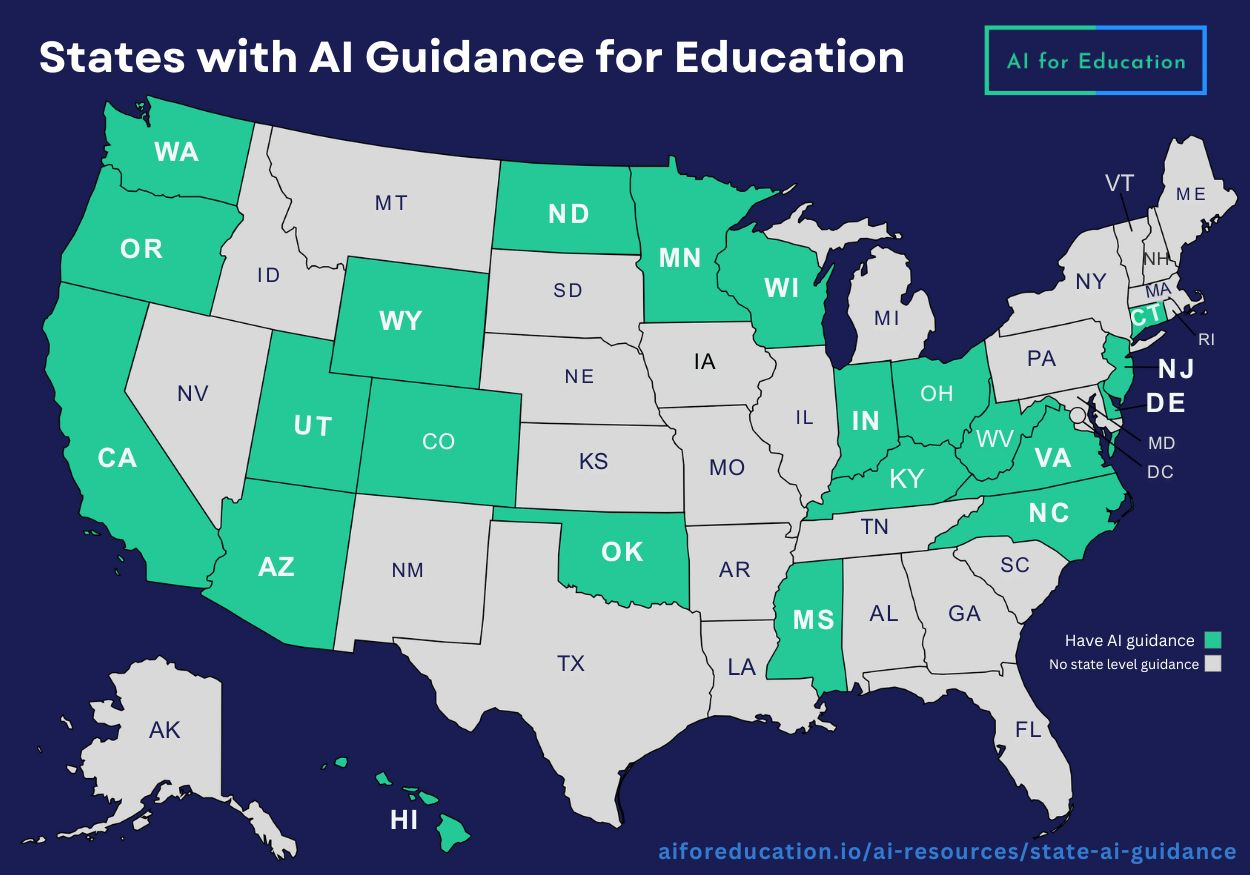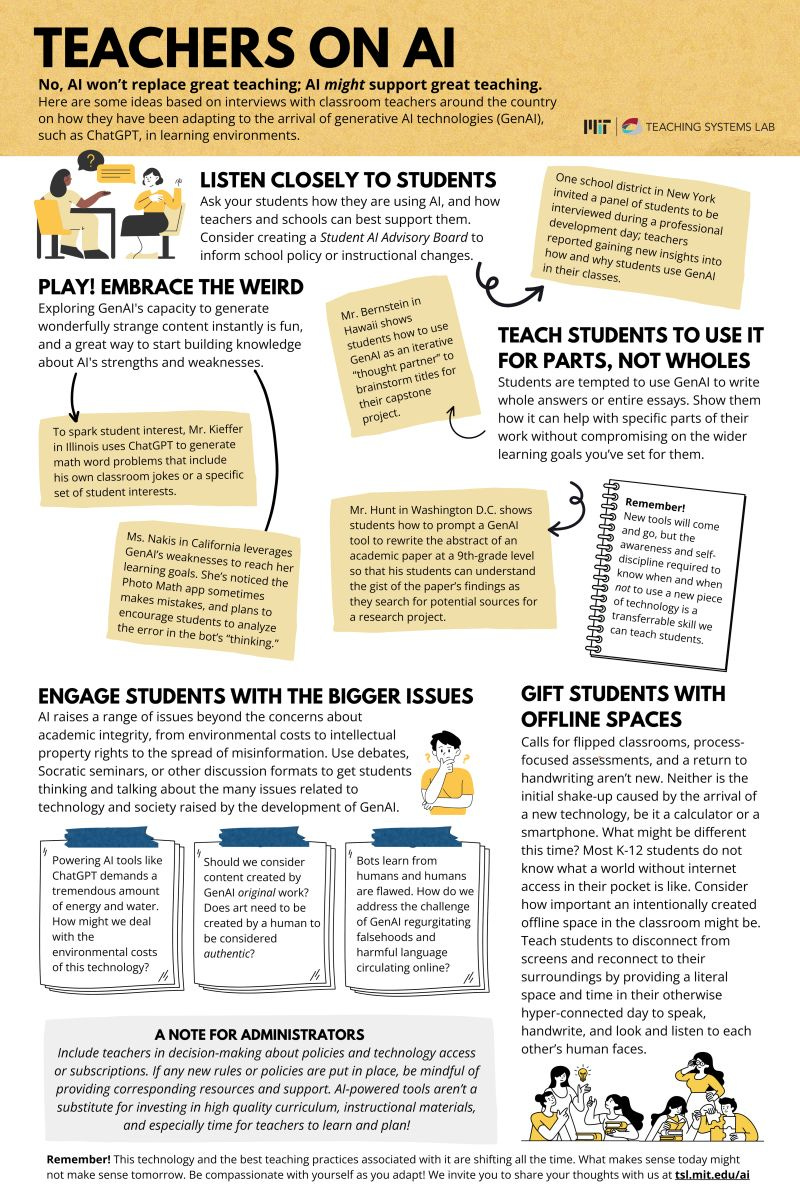🏫 AI's Hidden Risks in Education
Discover how schools are grappling with AI's unintended consequences as they enter the new academic year.
As the new academic year begins, schools around the world are increasingly integrating AI into their classrooms, bringing both innovation and controversy. In South Korea, the introduction of AI-powered digital textbooks that adapt to students' reading levels has stirred debate among parents. Meanwhile, in India, students are leveraging AI tools like Embibe to tackle complex math and science concepts through immersive 3D visualizations. We’re also seeing a growing number of collaborations between higher education institutions and tech giants like Nvidia.
In this edition, we offer valuable resources and insights to help you navigate the challenges and opportunities that AI presents in education. Please take a moment to fill out the short form below to let us know which topics will be most relevant to you as you start this new school year!
Here is an overview of today’s newsletter:
Explore classroom syllabi resources, state guidance on AI in Education, and more
Recap of our recent webinar on “Avoiding Pitfalls of Current AI Model Usage in K12 Education”
Read the latest research on how Gen AI can harm student learning through overreliance on AI tools
Discover how AI may affect first-generation students and learn strategies to mitigate these potential negative impacts
🚀 Practical AI Usage and Policies
Here are some resources on syllabus policies, state guidelines, and classroom tips to support you in the upcoming school year!
Classroom Syllabi Resources
Explore this spreadsheet to discover over 145 syllabus policies for AI generative tools across more than 50 disciplines. This resource was created by Lance Eaton and started in January 2023. You can submit your own policies for this upcoming school year to help grow the collection or use this resource to create your own policy for the new academic year. In a recent Substack post, Lance Eaton shares his insights from this collection, noting that STEM classes tend to be more permissive while Humanities classes are generally stricter on AI usage. Read his article to learn more!
State AI Guidance
Currently, 23 states have issued official guidance or policies on incorporating AI into K-12 schools, with Louisiana being the most recent one as of this edition’s release. These directives are designed to help integrate AI technologies into primary and secondary education across the United States. For a comprehensive list of state AI guidance for K-12 schools and a summary of their content, check out this resource by AI for Education.
Teaching Tips with AI
The MIT Teaching Systems Lab recently shared this printable poster summarizing key insights from their interviews with teachers about the impact of generative AI in schools. These insights may be valuable as you begin the new school year. Some of the tips highlighted in the poster include the following:
Listen closely to students
Play! Embrace the weird
Teach students to use it for parts, not wholes
Engage students with the bigger issues
Gift students with offline spaces
Feel free to share your own findings and tips in the comments section to help other educators and administrators as they prepare for the upcoming school year!
📣 Student Voices and Use Cases
Recently, our team at AI x Education hosted a webinar featuring award-winning public school teacher, principal, and superintendent, Michael Hardy, reviewing current AI research and discussing tangible cases and real-world applications in public education. As with all technology, it will likely improve, but until we know it is good enough, understanding some of the current shortcomings of AI in K12 education applications is necessary for navigating questions now and as AI products continuously evolve.
Watch the recorded webinar below to explore, through an equity-oriented K12 public school lens, why there is currently limited evidence of actual improvements to student learning, how to identify the types of educational tasks that GPT-style AI models are more likely to struggle with and consider the potential unintended consequences of their use.
To stay up-to-date with our future webinars, make sure to subscribe to our newsletter!
📝 Latest Research in AI + Education
The Wharton School
Generative AI Can Harm Learning ↗️
Brief summary: Research exploring the impact of generative AI on learning, particularly using OpenAI’s GPT-4 in high school math classes, highlights mixed outcomes. The study involved nearly a thousand students using two versions of AI tutors—GPT Base, a standard interface, and GPT Tutor, enhanced with learning safeguards. While GPT Base improved immediate performance, it ultimately reduced learning effectiveness when students were tested without AI support, suggesting an overreliance that hindered independent problem-solving.
Opinion: AI tutoring tools, as shown by the field experiment with GPT-4, should supplement rather than replace traditional educational techniques. The study showed that students using GPT Base, which readily provided answers, became overly dependent on the tool (reflected in their decreased performance in scenarios where AI assistance was withdrawn). This dependency hampers the development of critical thinking and problem-solving skills, which are essential for effective learning and long-term academic success. The immediate performance improvement might appear beneficial, but it conceals a deeper reduction in students’ abilities to tackle problems independently.
Furthermore, the adjusted approach used in GPT Tutor, which facilitated a more interactive and less direct form of guidance, highlights the potential of AI tools to enhance learning without replacing the fundamental role of human instructors. By engaging students in a step-by-step problem-solving process rather than providing outright answers, the GPT Tutor supported skill acquisition and a deeper level of understanding, aligning with educational goals that prioritize comprehensive knowledge over rote learning. This balance ensures that while students benefit from the efficiency and accessibility of AI, they remain at the center of the learning process, actively building and applying their knowledge and skills.
Bastani, Hamsa and Bastani, Osbert and Sungu, Alp and Ge, Haosen and Kabakcı, Özge and Mariman, Rei, Generative AI Can Harm Learning (July 15, 2024). Available at SSRN: https://ssrn.com/abstract=4895486 or http://dx.doi.org/10.2139/ssrn.4895486Walton Family Foundation
Brief summary: The research highlights the widespread and growing use of AI chatbots among Americans, particularly in educational settings. While the majority of K-12 and undergraduate students, teachers, and parents hold positive views on the impact of AI chatbots in classrooms, there is a significant lack of clear guidelines and professional development for teachers regarding appropriate chatbot use. About 66% of teachers permit AI chatbot use for schoolwork, yet only 32% report that their schools have established policies on AI usage. Furthermore, only 25% of teachers have received training on using AI chatbots, underscoring a gap between the use of these tools and formal guidance or support from educational institutions.
Opinion: Despite the optimistic sentiments surrounding AI-driven education, there is a strong argument for a cautious approach to integrating these tools into educational and workplace settings. The absence of clear guidelines and sufficient training, as highlighted by the research, can lead to inconsistent and potentially inappropriate use of AI technologies. Without standardized policies and professional development, teachers and students may rely on AI tools in ways that could undermine learning outcomes or ethical standards. This discrepancy between usage and guidance suggests that while AI tools offer significant benefits, such as enhancing learning and assisting with classroom management, their integration needs to be carefully managed to avoid dependence that could detract from educational goals.
Therefore, the introduction of AI tools in education should follow a staged approach, supported by comprehensive guidelines and training programs. This strategy would ensure that all stakeholders, including students, teachers, and parents, are well-prepared and knowledgeable about the effective use of AI technologies. Developing clear policies would not only maximize the benefits of AI but also safeguard against potential risks, ensuring that AI serves as a supplement to traditional methods rather than a replacement.
Impact Research (2024, May). AI Chatbots in Schools: Findings from a Poll of K-12 Teachers, Students,
Parents, and College Undergraduates. https://8ce82b94a8c4fdc3ea6d-b1d233e3bc3cb10858bea65ff05e18f2.ssl.cf2.rackcdn.com/bf/24/cd3646584af89e7c668c7705a006/deck-impact-analysis-national-schools-tech-tracker-may-2024-1.pdf📰 In the News
The Wall Street Journal
There’s a Tool to Catch Students Cheating With ChatGPT. OpenAI Hasn’t Released It ↗️
Key takeaways:
OpenAI has developed a tool to detect AI-written essays and papers with 99.9% accuracy but has not released it due to internal debates about its impact on user retention and fairness, particularly towards non-native English speakers.
The tool works by subtly altering token selection during text generation, creating watermarks that are invisible but detectable by a specific technology, raising concerns about the potential for these marks to be removed by simple methods.
Teachers and professors express an urgent need for such technology as the use of AI in cheating is rising, with studies indicating significant numbers of students may be utilizing AI for academic help.
The discussion about the tool's release has been ongoing for two years, involving top executives at OpenAI. There are also concerns about the tool's effect on the quality of ChatGPT's outputs and the public's perception of OpenAI as a responsible entity in AI development and usage.
WGU Labs
AI as the New Digital Divide for First-Generation Students ↗️
Key takeaways:
The introduction of generative AI technology, like ChatGPT, is creating a new digital divide, with first-generation students less aware and less likely to use AI tools compared to their peers from continuing-generation families, potentially impacting their readiness for a tech-driven future.
Despite significant gains in technology access among low-income and rural students, a lack of AI literacy poses a new barrier, with only a third of first-generation college students aware of AI tools like ChatGPT, compared to nearly half of their continuing-generation counterparts.
Many institutions lack formal policies or guidelines on the use of AI tools, with 67% of higher education administrators indicating no existing policy on AI, leading to continued inequities in AI knowledge and usage among students.
To address this growing divide, educational institutions need to develop inclusive policies that promote productive AI engagement, thereby ensuring all students are prepared for future careers that will increasingly require proficiency with AI technologies.
“Chatgpt.” ChatGPT, OpenAI (GPT-4), openai.com/chatgpt. Accessed 25 Aug. 2024. And that’s a wrap for this week’s newsletter! If you enjoyed our newsletter and found it helpful, please consider sharing this free resource with your colleagues, educators, administrators, and more.








Interesting, thanks for sharing!
thanks for the shout out to the resources and the post!